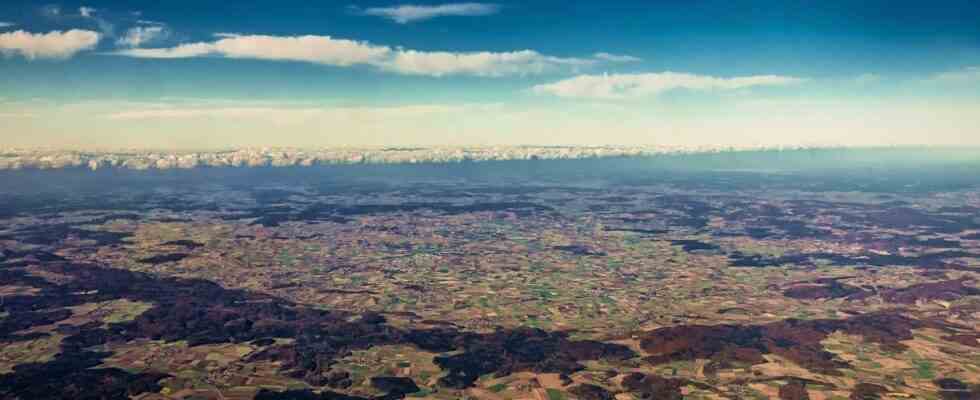This Thursday it is officially done, when the Geopark Ries will be included in the ranks of the Unesco Global Geoparks in a ceremony lasting several hours. The Unesco title is a big deal for the park, it is the first in Bavaria to boast the international distinction and one of 177 worldwide. “Geopark Ries is an impressive showcase of the earth’s history,” says Maria Böhmer, President of the German Unesco Commission, who accompanied the application from Ries. “Here we can experience directly how our planet was shaped by cosmic events.”
14.5 million years ago a huge meteorite fell on the region near present-day Nördlingen. What at that time wiped out all life within a radius of hundreds of kilometers turns out to be a stroke of luck in retrospect: The Ries is regarded as Bavaria’s breadbasket, it is one of the best-preserved impact craters in the world and has been scientifically researched accordingly. Astronauts and researchers, including those from the US space agency Nasa, were not even in the geopark, mainly to familiarize themselves with the rock there: the so-called suevite, which was formed by the meteorite impact, is very similar to the rock on the moon.
A review every four years
The Unesco Commission and Geopark boss Heike Burkhardt, who has been working towards the title with her team since 2016, are now talking about “special landscape”, “worldwide appreciation” and “international research location”. First, the Geopark had to take on a different legal form, then re-delineate its area, and finally Corona delayed the appointment, which should have been made last year. “We’re happy that we stuck with it,” says Burkhardt.
And it has to keep going: there are World Heritage titles such as the old town of Bamberg, there is an intangible World Heritage Site and a world documentary heritage, and there are now many UNESCO awards. The title “Unesco Geopark” is reserved for regions that show the earth’s history particularly vividly and protect this heritage, make it visible and also develop it further. While world heritage titles are awarded on a permanent basis, Geopark Ries must be re-certified by Unesco in 2025. “We are in a permanent process and are checked every four years to see whether we continue to meet the guidelines,” says Burkhardt.
“Sustainable development”
The requirements are primarily aimed at sustainable development. For Burkhardt, the priority with the award is by no means to attract tourists en masse. It would be nice, she says, if one or two tourists who would otherwise not come could find their way to northern Swabia thanks to the UNESCO seal of approval. Especially from the surrounding area, from Munich for example. “But it’s primarily an award for the region and gives us the chance for everything to live on here.” Burkhardt believes that the title can be formative for rural development in the Ries, including for the competition for skilled workers from other regions. “The people who live here see that it’s worth staying here because it’s a special region. And others might want to live here. It’s a development opportunity for the entire region.”
“Sustainable development” is the magic word, which in this case is not a marketing slogan, but is one of the UNESCO conditions for the geopark title. District Administrator Stefan Rößle sees the Donau-Ries as a “model region for sustainable development”, an example of this is the “Geopark Ries culinary” program. Producers, restaurants and hotels around the Geopark have committed themselves to offering regional products and thus “counteracting the creeping impoverishment of the regional offer through leveling and interchangeability”. In order to bring all this closer to guests, managing director Burkhardt now wants a visitor center – as a portal for the region and because she has to position herself internationally. She will now also have to organize global geopark meetings, with more than 1000 participants.

